Types of Software Chapter Notes | Computer Studies Class 5 ICSE PDF Download
Introduction
Software is a collection of programs that helps a computer work. These programs give step-by-step instructions to the computer to do different tasks. Software is very important because, without it, a computer cannot function. This chapter teaches us about the different types of software, like system software and application software, and explains how they work. We will also learn about operating systems, utility software, and how to do things like backing up files and defragmenting a disk.

Software and Its Types
- Software means a set of programs that helps the computer work properly.
- A program is a set of instructions that tells the computer what to do.
- Software is divided into two main types: system software and application software.
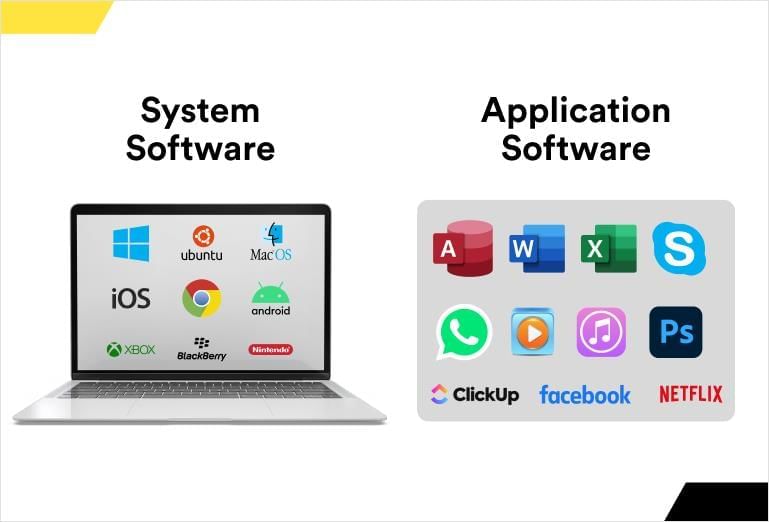
System Software
- System software is a set of programs that controls the computer's hardware and its operations.
- It acts as a bridge between the user and the computer's hardware.
- The user does not need to understand the details of the system software to use the computer.
- It supports the creation and running of other software, called application software.
Functions of an System Software
- It keeps track of hardware devices like the CPU, monitor, and keyboard.
- It manages communication with devices like printers, disk drives, and tape drives.
- It helps the computer work more efficiently by managing hardware properly.
- Examples of system software include operating systems, language processors, and utility software.
Operating System
- An operating system (OS) is a special set of programs that controls the computer's hardware.
- It is the most important type of system software.
- Examples of operating systems used today are Microsoft Windows, Linux, UNIX, and Mac OS.
Functions of an Operating System
- Resource Management: It manages resources like memory, processors, and input/output devices.
- Processor Management: It handles the working of the processor.
- File Management: It organizes tasks like creating, transferring, copying, storing, and deleting files.
- Working of Software: Application software like Paint, Microsoft Word, and PowerPoint runs on the operating system.
- Security: It keeps the computer safe by using passwords to stop misuse.
- Storage Management: It controls how files and folders are stored on the computer.
- It also manages user access to different files, folders, and programs.
- It assigns memory to different programs as needed by the operating system.
Types of Operating Systems
Operating systems are divided into two types: single-user and multi-user.
- Single-user operating systems: These are made for one user only.
- In single-user systems, only one user can access the operating system at a time.
- Examples of single-user operating systems are MS-DOS and OS/2.
- Multi-user operating systems: These are made for many users to use at the same time.
- Examples of multi-user operating systems are UNIX, Xenix, Windows, and OS/400.
- Multitasking operating systems: These allow the user to work on multiple programs at the same time.
- For example, in Windows, you can work on a Word document and print something at the same time.
Did you know?
MS-DOS, developed by Microsoft Inc. in 1981, was the most widely used operating system for IBM-compatible microcomputers.
Utility Software
- Utility software helps with specific tasks like managing, maintaining, and controlling computer resources.
- Examples of utility software include antivirus programs, backup software, file management tools, and network utilities.
- These programs can be bought from licensed companies or downloaded for free from the internet.
Network Utility
- Network utility gives information about network connections and devices.
- It shows details like the hardware address, IP address, speed, status, number of data packets sent and received, and transmission errors.
File Manager Utility
- File Manager utility helps the user manage files on the computer.
- It allows the user to view, edit, copy, and delete files on storage devices.
Did You know?
File Manager helps the user view and manage files, but the operating system is responsible for accessing and storing files on a storage device in the computer.
Disk Management Utility
- Disk Management utility takes care of disk-based hardware.
- It manages drives like hard disk drives, optical disk drives, and flash drives in the computer.
- It can also handle partitioning and formatting drives as needed.
Virus Scanner and Cleaner Utilities
- Virus scanner and cleaner utilities detect and remove viruses from the computer.
- A virus is harmful software that disrupts the normal working of a computer.
- Viruses spread through floppy disks, CDs, and pen drives, just like biological viruses spread from one person to another.
- Viruses can cause problems like damaging data, losing user information, showing unexpected messages, and causing system crashes.
- Examples of virus scanners include Norton Antivirus, McAfee, Smart Dog, and Dr. Solomon’s Antivirus Tool Kit.
Backup
- Backup means making a copy of data to recover it if the original data is lost or damaged.
- For example, a hard disk can get damaged, leading to the loss of files stored on it.
- It is important to keep backups on devices like CDs, DVDs, or pen drives to restore files if needed.
Here are the steps to back up files in Windows 7:
- Step 1: Click the Start button and select Windows System.
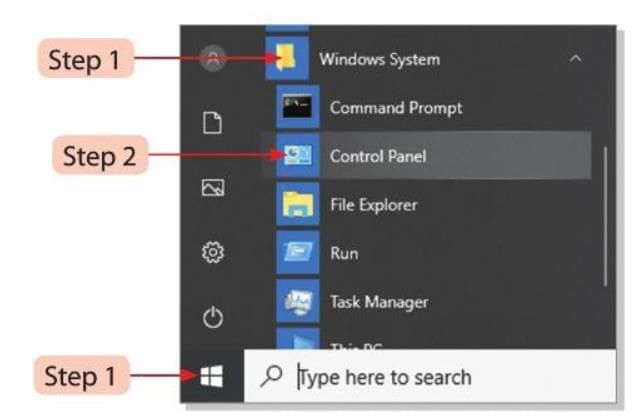
- Step 2: Go to Control Panel and select Backup and Restore (Windows 7).
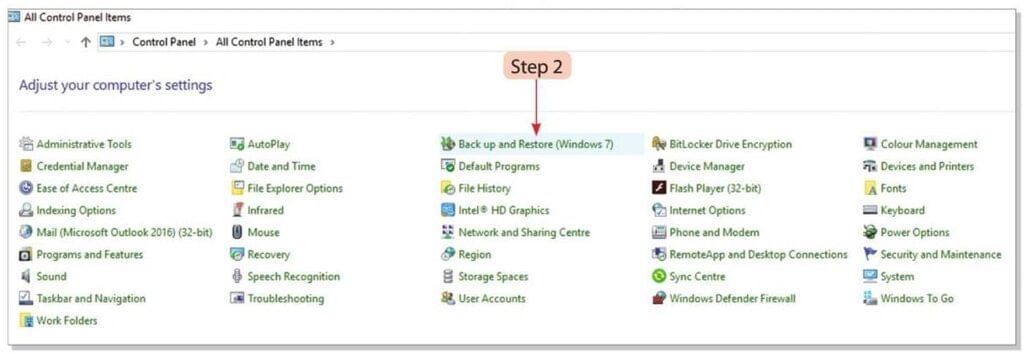
- Step 3: Click on the Set up back-up link to start the backup process.

- Step 4: You will see the Set up backup dialog box on the screen.

- Step 5: Select the drive where the backup of the files needs to be saved, then click Next.
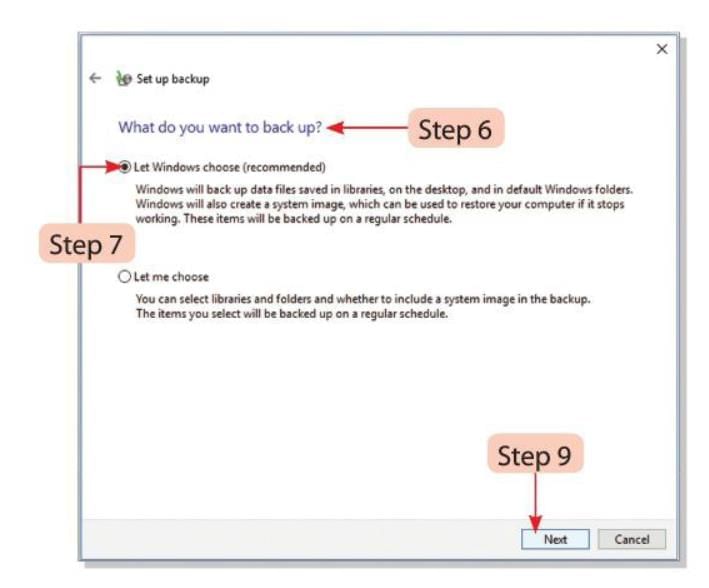
- Step 6: You will see a message: "What do you want to back up?"
- Step 7: Let Windows choose (recommended) is selected by default; this option backs up data files saved in libraries on the desktop. Windows also creates a system image to help restore the computer if it stops working.
- Step 8: You can also select the Let me choose option to back up specific items.
- Step 9: Click Next to review the backup settings in the next window.
- Step 10: Check all the backup details and select the Change schedule option to set the day and time for the backup.
- Step 11: Click Save settings and run backup to start the backup process.
Data Compression Utility
- Data compression utility reduces or expands the size of files stored on floppy or hard disks.
- Compressed files take up less space on the disk, which saves space.
- WinZip is a popular data compression program available with Microsoft Windows operating systems.
Language Processor
- A language processor helps give instructions to the computer using a programming language.
- A set of instructions is called a program, and the language used to write it is called a programming language.
- There are many types of programming languages, like computer languages and simple languages.
- Computers can understand instructions in any high-level language, but they only understand machine language, which uses 0s and 1s.
- Software called language processors converts high-level language code into machine code that the computer can understand.
- Language processors are divided into three types: interpreters, compilers, and assemblers.
Interpreters
- Interpreters convert high-level language instructions into machine code statement by statement.
- They translate and execute the code at the same time.
- Interpreters are slow for running large programs because they translate each statement one by one.
- They are not suitable for most application development due to their slow speed.
Compilers
- Compilers convert the entire high-level language program into machine code (object code) at once.
- They translate the source code into object code and then execute it, making them faster than interpreters.
- Compilers are used in developing application software because of their speed.
Assemblers
- Assemblers convert assembly language code (called mnemonic code or source program) into machine language code (object program).
- After assembling, a linker program converts the object program into an executable program.
- Assemblers are mainly used in developing system software.
Application Software
- Application software includes programs that help users do specific tasks on the computer.
- Examples include database management software, word processing software, and accounting software.
- Application software is divided into two types: General Purpose Application Software and Customised Application Software (Special Purpose Application Software).
General Purpose Application Software
- General Purpose Application Software is used for common tasks like word processing, creating spreadsheets, making presentations, and managing databases.
- MS Office, which includes MS Word, MS Access, and MS Excel, is an example of general purpose application software.
Word Processing Software
- Word processing software lets you write, edit, format, save, and print documents.
- It helps create high-quality documents faster than using a typewriter.
- Word processing software is widely used for typing, editing, storing, formatting, and printing documents.
- It saves time by allowing users to edit, copy, or move text from one location to another and insert or delete spaces or text.
- MS Word is the most popular word processor.
- Other examples include WordPad, OpenOffice.org Writer, and LibreOffice Writer.
Spreadsheet Packages
- Spreadsheet packages are used for calculation work, especially in business applications.
- A spreadsheet is a sheet of paper with rows and columns; in a computer, it is an electronic spreadsheet.
- Spreadsheets are used to store information in a computer's memory.
- They are important for creating databases and electronic spreadsheets in computerized management systems.
- Examples include financial statements, annual reports, balance sheets, cost analyses, and budgets.
- MS Excel is the most popular spreadsheet program.
- Other examples include Lotus 123 and OpenOffice.org Calc.
Presentation Software
- Presentation software helps create presentations, like for a task such as tree plantation.
- You can make charts and posters manually or use presentation software to create them on the computer.
- Microsoft PowerPoint has many features to design effective presentations with animation effects.
- Other examples include Adobe Flash and OpenOffice.org Impress.
Database Management Packages
- Database management packages (DBMS) are software that organizes and maintains data in a database.
- They are used by businesses to store and manage large amounts of data.
- Examples include MS Access, Oracle, OpenOffice.org Impress, Ingres, Sybase, and Informix.
Customised Application Software
- Customised Application Software (Special Purpose Application Software) is made for specific tasks and organizations.
- Unlike general purpose software, it is not for everyone but for specific needs.
- Examples include software for multimedia, financial accounting, sales, marketing, desktop publishing, graphics, animations, and export documentation.
Differences between System Software and Application Software
- System software is used to operate computer hardware, while application software is used for specific tasks by the user.
- System software is installed on the computer when the operating system is installed, but application software is installed based on the user's needs.
- The user does not interact with system software in the background, but the user interacts directly with application software.
- System software runs independently and provides a platform for application software, while application software cannot run without system software.
- Examples of system software include compilers, assemblers, and drivers.
- Examples of application software include word processors, spreadsheet packages, and presentation software.
Operational Support Systems (OSS)
- Operational Support Systems (OSS) are programs used by communication service providers.
- They help monitor, control, analyze, and manage a computer or telephone network system.
- OSS mainly involves operations like supporting network inventory, configuring network parts, and managing faults.
Defragmentation
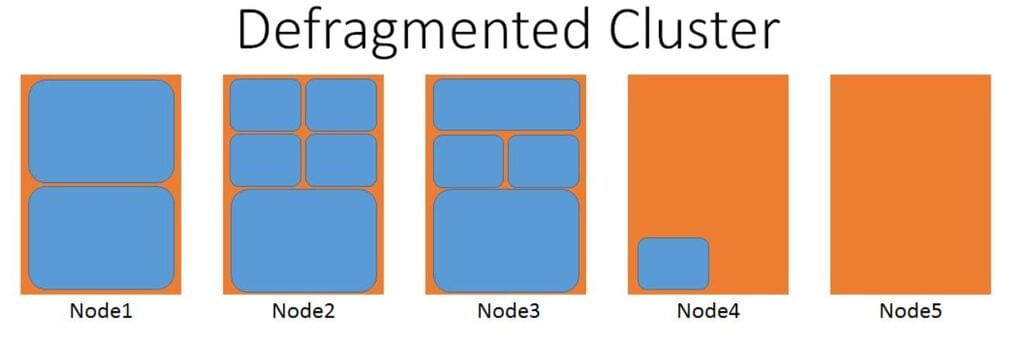
- Defragmentation is the process of organizing the file system by putting scattered file pieces together.
- It improves the performance of the computer by making file access faster.
- Defragmentation can be done on a schedule or manually.
- When a file is saved, it might get broken into pieces due to limited space on the storage device; this is called fragmentation.
- Fragmentation happens when a user opens, modifies, and saves files, causing the file to take up more space.
- The operating system breaks the file into pieces and stores them in different parts of the storage area.
- The file system, like the File Allocation Table (FAT), keeps track of where the file pieces are stored.
- When the user opens the file again, the system finds the pieces and puts them together.
Here are the steps to defragment a disk in Windows:
- Step 1: Click the Start button and select Administrative Tools.
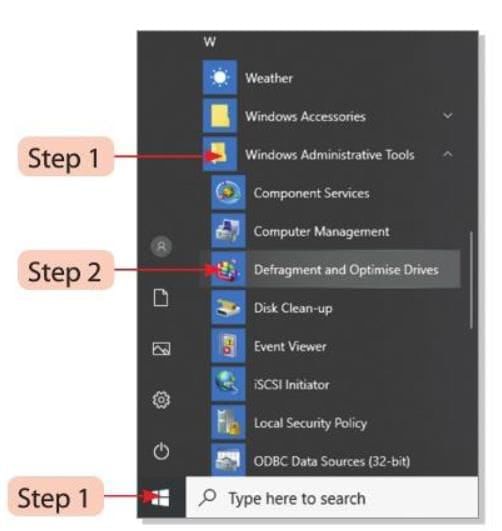
- Step 2: Select the Defragment and Optimize Drives option.
- Step 3: You will see the Optimize Drives window.
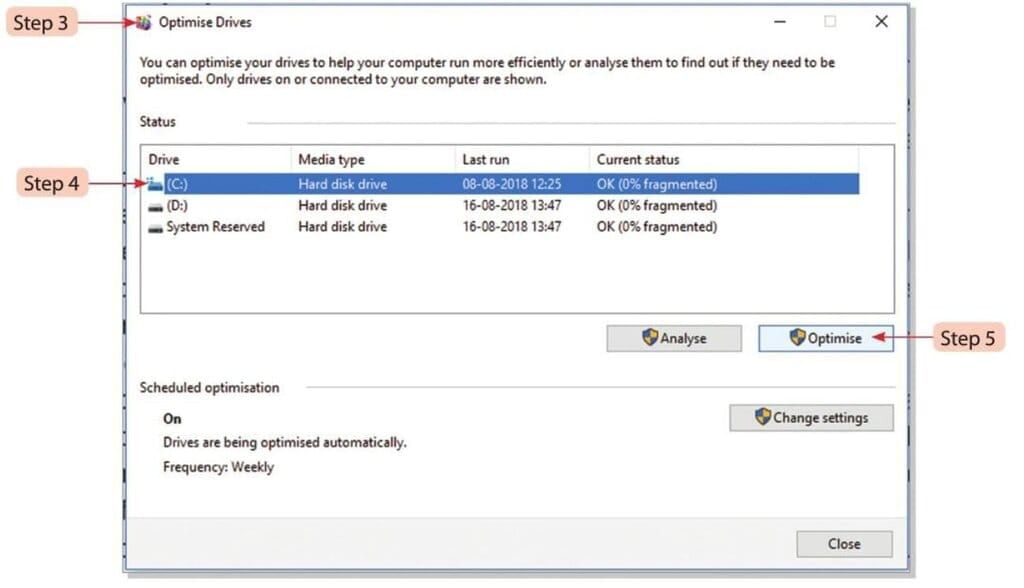
- Step 4: Select the disk to defragment under the Drive column in the Status section.
- Step 5: Click the Optimize button to start the defragmentation process, which takes a few minutes to complete.
Points To Remember
- Programs are step-by-step instructions given to a computer to perform a specific task.
- Software can be divided into two types: system software and application software.
- System software creates a link between the user and the hardware of a computer.
- Operating systems are of two types: single-user and multi-user.
- Utility software performs specific tasks like managing and controlling computer resources.
- Network utility provides information and details about network connections and devices.
- File Manager utility helps a user manage files on disk-based hardware.
- Virus scanner and cleaner utilities are used to detect and remove different types of viruses.
- It is important to back up files on different devices like CDs, DVDs, and pen drives.
- Data compression utility compresses or decompresses files that are stored on floppy and hard disks.
- Application software is classified into two types: General Purpose Application Software and Customised Application Software.
- Database Management Systems organize and maintain data in a database to provide information.
Glossary
- Software: A set of computer programs.
- Operating System: A special set of programs that controls various hardware programs.
- Backup: The process of recovering data if it is lost or damaged.
- Fragmentation: The process in which an operating system breaks a file into pieces due to shortage of space in the storage device.
- Virus: An unauthorized software that disrupts the normal working of a computer.
- Application Software: Programs required to perform specific work for end users.
- Defragmentation: The process of scanning the file system and putting the fragments of the file together.
- Data Compression: It compresses or decompresses files that are stored on floppy and hard disks.
- Computer: It understands only the machine language, i.e., 0s and 1s.
|
21 docs|7 tests
|
FAQs on Types of Software Chapter Notes - Computer Studies Class 5 ICSE
| 1. What are the main types of software? |  |
| 2. How does system software differ from application software? |  |
| 3. Can you give examples of utility software? |  |
| 4. What is the role of application software in daily tasks? |  |
| 5. Why is it important to keep software updated? |  |





















